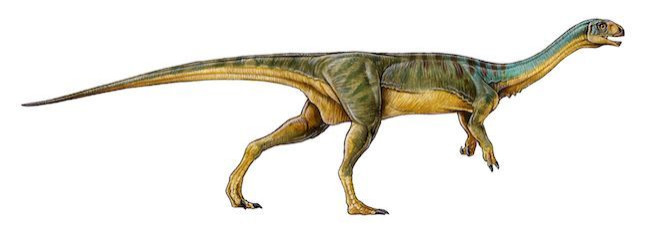
A bizarre "platypus" dinosaur has been found in Chile. The dinosaured named Chilesaurus Diegosaurezi remains were found in the Toqui Formation in Chile. Palaeontologists are referring to the new dino as a 'platypus' dinosaur because of its extremely perplexing combination of characters that include a proportionally small skull and feet more akin to primitive long-neck dinosaurs. Check out these other four details you need to know about Chilesaurus Diegosaurezi.
1. The Chilesaurus diegosuarezi is a member of the theropod species, which is the same dinosaur group that include Velociraptor and Tyrannosaurus and evolve into modern birds. However, unlike its relatives this new "platypus" theropod is a vegetarian. Researchers hadn't seen an herbivorous theropod until much closer to modern birds on the evolutionary timeline.
2. Chilesaurus diegosuarezi is named in honor of Diego Suárez, who found the first bone remains in the Toqui Formation in Chile at the age of seven while out with his geologist parents. Since that first discovery, researchers have found enough additional bones, which include four complete skeletons about the size of a turkey.
3. The dinosaurs is described as having had big forelimbs like the Allosaurus with two blunt fingers at the end instead of claws. But its pelvis shape, small skull and some other bones resemble totally different dinosaur groups, suggesting an herbivorous lifestyle that evolved in theropods independently of these other groups. Martin Ezcurra of the University of Birmingham confirmed this saying,
4. Martin Ezcurra of the University of Birmingham said in a statement the Chilesaurus is a perfect example of convergent evolution.
"Chilesaurus can be considered a 'platypus' dinosaur because different parts of its body resemble those of other dinosaur groups due to mosaic convergent evolution," said Ezcurra. "In this process, a region or regions of an organism resemble others of unrelated species because of a similar mode of life and evolutionary pressures. Chilesaurus provides a good example of how evolution works in deep time and it is one of the most interesting cases of convergent evolution documented in the history of life."
© 2025 Latin Times. All rights reserved. Do not reproduce without permission.





